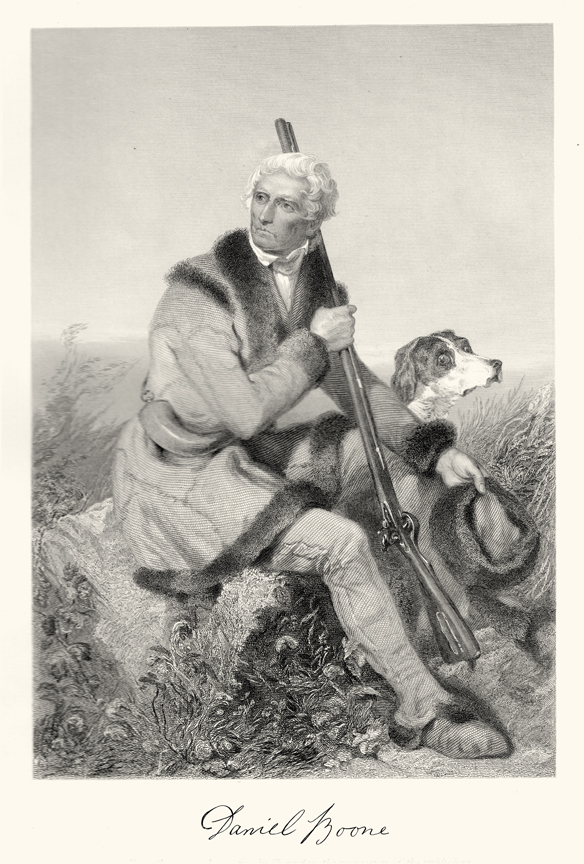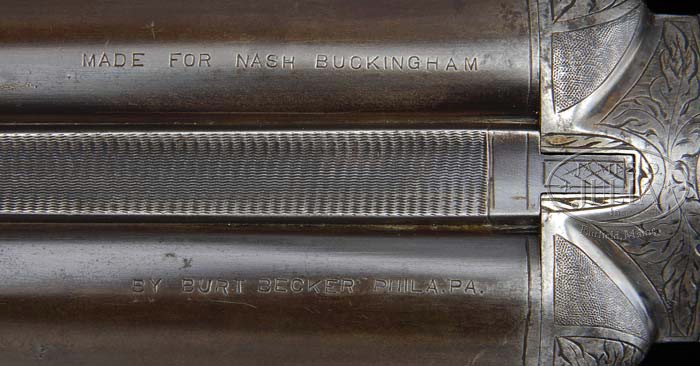If you look into the annals of history with an eye for firearms culture, you’ll discover many well-known nimrods who gave a name to a much-loved gun, including these renowned outdoorsmen.
Davy Crockett
Perhaps the best-known gun is Davy Crockett’s Old Betsy. Old Betsy was a .40-caliber rifle made by James Graham of Pennsylvania. She had a black walnut stock, with brass hardware and silver inlays. This was a particularly beautiful firearm, and one the poor Senator Crockett could never have afforded to purchase himself. As a member of the Tennessee State Assembly, Crockett championed veterans’ rights and made it easier for individuals to own land. So the constituents of Lawrence County took up a collection and presented him this rifle on May 5, 1822.
Much mythology surrounds Old Betsy. While it is accurate to say that Crockett killed more than 100 black bears with her during six months of hunting in 1825 and 1826, he did not use Old Betsy during the battle of the Alamo. Crockett left the flintlock with his son John Wesley upon departing for Texas. The original rifle, severely foreshortened and converted from flint to percussion ignition, is now displayed in the Alamo Chapel Museum in San Antonio, Texas.

Davy Crockett’s rifle “Old Betsy” may be one of history’s best-known firearms. (Credit: Arkansas Historical Commission)
Daniel Boone
Daniel Boone was another legendary hero who carried a flintlock rifle. Crafted by his brother Squire, a skilled gunsmith, this .44-caliber Kentucky longrifle stretched more than 5 feet and weighed nearly 11 pounds. Boone dubbed the gun “Old Tick-Licker,” boasting he could use it to shoot a tick off an animal without hurting the beast. By modern standards, it was a massive firearm, bulky and unwieldy. But it was one of the finest guns of its day, surprisingly accurate and crafted with the durability that survival on the frontier demanded.

In this 1861 portrait by Alonzo Chappell, Daniel Boone is seen with his beloved gun “Old Tick-Licker.” In years past, many hunters gave names to their favored firearms.
Buffalo Bill Cody
“Lucretia Borgia” was a.48-caliber trapdoor Springfield rifle owned by Buffalo Bill Cody. Cody may have gotten the idea for the name from playwright Victor Hugo’s famed Lucretia Borgia. Borgia, the daughter of Pope Alexander VI, was described as a cold-blooded murderer in many dramas and books, and it is said Cody named his gun for her due to its deadliness.
Cody related details about the gun in a story told by Zane Grey in Last of the Great Scouts.
“I have killed over 40,000 buffalo, and most of them with that old gun,” Cody said. “…our term of service on the Plains covered so many years, and so many different kinds of guns came into use that we tried out this one, then that one. The Winchester was well liked, as was the Spencer carbine, especially on horseback, but they could not shoot alongside of the .48-caliber needle-gun. That carried 70 grains of powder and 470 grains of lead. ‘Shoot to-day!—kill to-morrow!’ was what the Indians called it.
“That was my father’s rifle, and I love that gun.”
Nash Buckingham
The best known gun in waterfowling history may be “Bo Whoop,” a 12-gauge magnum double-barrel owned by famed writer Nash Buckingham. Buckingham was a respected authority on shooting and hunting. In 1921, Western Cartridge Company president John Olin sent him an Askins-Sweeley magnum 12-gauge to field test the company’s new Super-X shotshells. Buckingham liked the gun so much he commissioned to build one for him just like it.
The shotgun Becker crafted to Buckingham’s specifications was constructed on a Fox frame with 32-inch barrels, which were overbored to deliver a 90-percent pattern of copper-coated 4s at 40 yards. Nash’s good friend Colonel Harold P. Sheldon called the gun Bo Whoop because of its distinctive hollow report.
Following a December 1, 1948 duck hunt near Clarendon, Arkansas, Buckingham was riding back to town with a man named Clifford Green when a pair of game wardens stopped the men and checked their licenses and ducks. Bo Whoop was laid on the fender of Green’s car after one of the wardens looked at the gun, and Buckingham didn’t notice it was missing until they had driven several miles away. Despite an exhaustive search by game wardens, police and hunters, and ads placed with local newspapers and radio stations, Buckingham never saw the gun again.
As it turns out, the gun was found and later sold with a broken stock for $50. The buyer kept it in a closet at home for decades, and in 2005, his grandson took it to a shop for repair where he learned its origin. In 2010, Bo Whoop sold at auction for $201,250, the third-highest auction record for an American shotgun at the time. The buyer, Hal B. Howard Jr. of Palm Beach, Florida, donated it for permanent display at Ducks Unlimited’s national headquarters in Memphis.

Philadelphia gun maker Bert Becker made Bo Whoop exactly how Nate Buckingham asked. (Credit: James D. Julia Auctioneers)
Featured image: iStock







